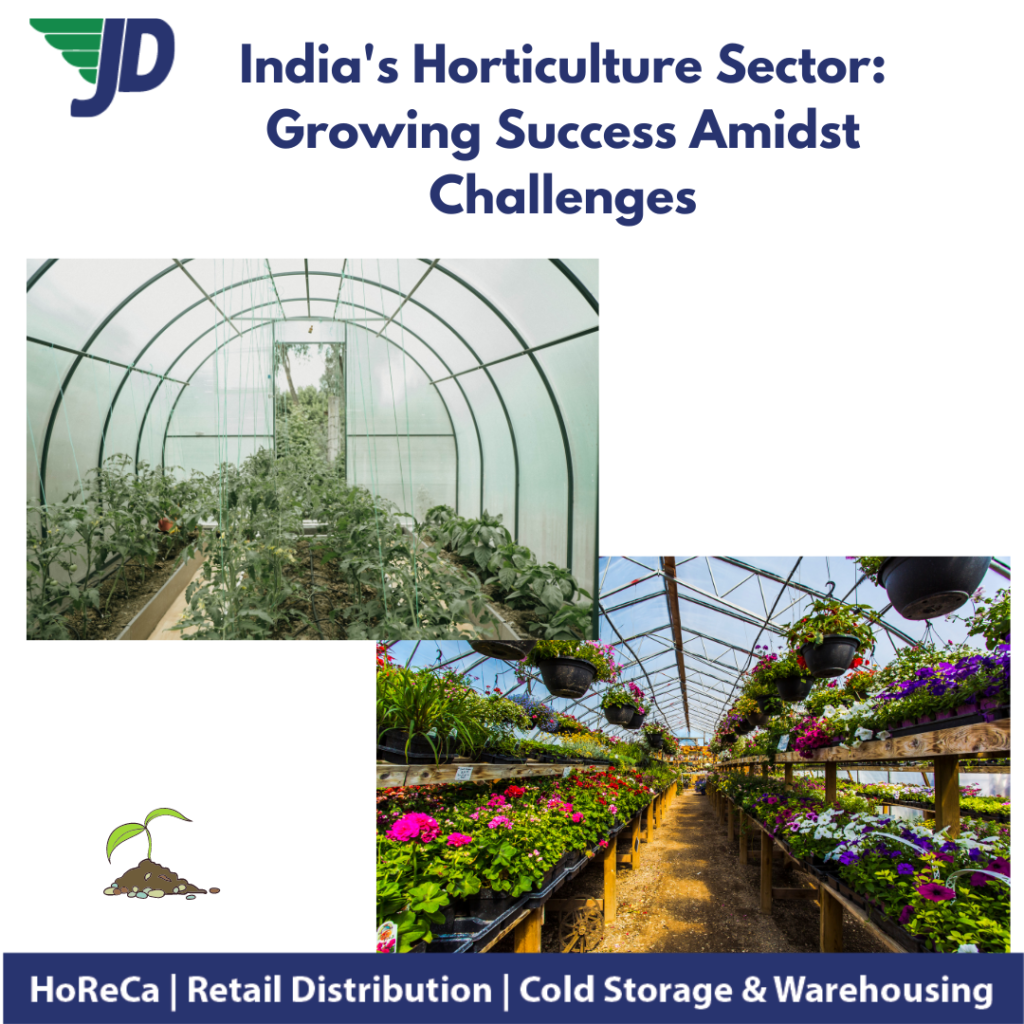Overcoming Challenges for Global Success🌱🍇🍊
India’s horticulture sector is flourishing, with the country producing an impressive 320 million tonnes of horticulture produce, surpassing food grain production. This success is achieved from a much smaller land area, with 25.66 million hectares dedicated to horticulture compared to 127.6 million hectares for food grains. India has established itself as a global leader in fruit production, excelling in mangoes, bananas, guavas, papayas, sapotas, pomegranates, limes, and aonlas, and ranking as the second-largest producer of fruits and vegetables worldwide.
*The Diversity of Horticulture* 🌿🍊🍇
Horticulture encompasses various branches:
1. Olericulture: Focuses on vegetable production.
2. Pomology or Fruticulture: Specializes in fruits and nuts.
3. Viticulture: Centers around grape production, primarily for winemaking.
4. Floriculture: Revolves around flowering and ornamental plants.
India’s Competitive Advantage 🚀🌾
India’s horticulture sector is not only profitable but also more productive than traditional agriculture. It has emerged as a rapidly growing industry, ranking second in fruit and vegetable production globally after China. The country’s success in this sector is attributed to favorable agro-climatic conditions, abundant labor, and low input costs, making it a cost-effective producer of fruits and vegetables.
Challenges Hindering Global Trade 🛑🌍
Despite the sector’s growth, India’s share in global trade for vegetables and fruits remains low, at just 1%. Several challenges hinder export growth, including production and marketing challenges, inadequate transport infrastructure, fragmented supply chains, and insufficient storage facilities. These issues lead to delays, wastage, and discourage farmers from enhancing the quality of their produce.
Looking to Revolutionize Horticulture in India?
Discover how our innovative solutions can elevate your horticultural operations and drive growth.
Solutions in Action 🛠🚚
To address these challenges, the Ministry of Food Processing Industries has launched several schemes to promote the food processing industry. These schemes focus on creating cold chain infrastructure, agro-processing clusters, backward and forward linkages, preservation infrastructure, Operation Greens, and Mega Food Parks. These initiatives provide facilities such as storage, testing labs, and logistics support, while also stabilizing the supply and prices of perishable commodities, encouraging farmers to improve their quality standards.
India’s horticulture sector holds immense potential, and with the right strategies and support, it can further establish itself as a key player in the global market.
To fully unlock India’s horticulture potential, partner with JustDeliveries, a trusted logistics service provider. We offer tailored solutions to ensure the safe and efficient delivery of your fresh produce. To learn more, contact us today!

Mansi Mahansaria
I’m Mansi Mahansaria, CEO and Founder of JustDeliveries, a B2B logistics company specializing in the food and beverage sector. With a background in Chemical Technology (ICT Mumbai), an MBA (FMS Delhi), and experience at IDFC Private Equity and Tata Group, I’ve built a plug-and-play logistics network helping F&B brands scale efficiently. I also share insights on entrepreneurship and logistics at industry and academic events.





